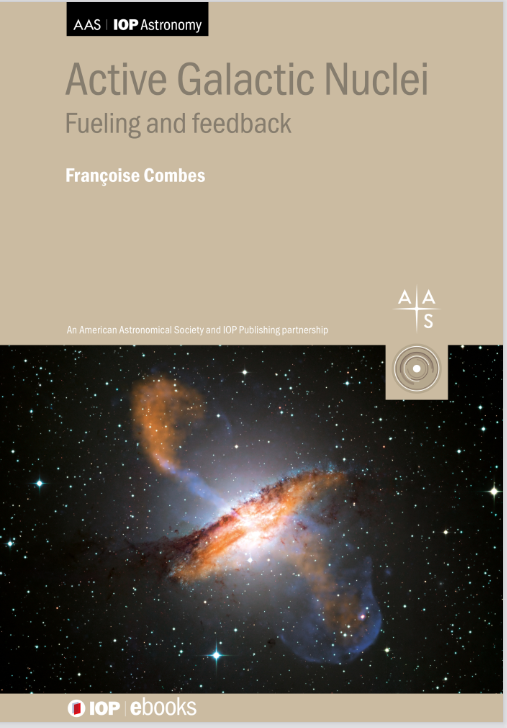
Active Galactic Nuclei: Fueling and Feedback
Françoise CombesActive galactic nuclei (AGN) are powered by supermassive black holes at galaxy centers. At the maximum of their power, they can radiate 1000 times more than their host galaxy. This activity must be fueled by gas infall, but the timescales to bring the gas have been a problem for a long time. Now with high resolution and sensitivity instruments, like the Atacama Large Millimeter/submillimeter Array (ALMA) in the radio, or MUSE at the European Southern Observatory (ESO)/Very Large Telescope (VLT), it is possible to unveil the interstellar medium and stars in the circumnuclear regions, discover molecular disks and tori, and the source of molecular outflows, the main feedback processes of AGN on their host. The book contains a general review of all our knowledge of AGN, powered by super-massive black holes: how AGN are fueled by gas (or stars) and what are the problems encountered; how we can account for the wide variety of AGN, from Seyfert/Liners to quasars, and for the two types (AGN 1 and 2) either through dust obscuration, and geometrical orientation arguments, or through intrinsic activity difference, qualitative or quantitative. The fueling requires an exchange of angular momentum, which can be fostered by bars, spirals, and embedded features (bars within bars). After the duty cycle of the AGN has started, the luminosity is so high that the gas may be ejected (winds, radio jets), which stops the future star formation in the host-galaxy, and plays the role of feedback. Molecular outflows have been widely observed in the recent years, and numerous examples are described. Feedback can be triggered by winds when the activity of the AGN is near maximum, and through the radio jets, at low activity level. Different models have been devised to understand the structure of the circumnuclear regions, including a dusty or molecular torus, a bicone ejection, and thin or thick disk to collimate the flows. These models are now beginning to be better constrained by the high resolution radio observations, including masers mapped with very long baseline interferom- eters, or millimetric observations of tori. The components in the nuclear regions are frequently misaligned with the outer galaxy disk, which fosters the efficiency of AGN feedback.
Read the book here
Editor : IOP Publishing
Collection : Online
Language : English